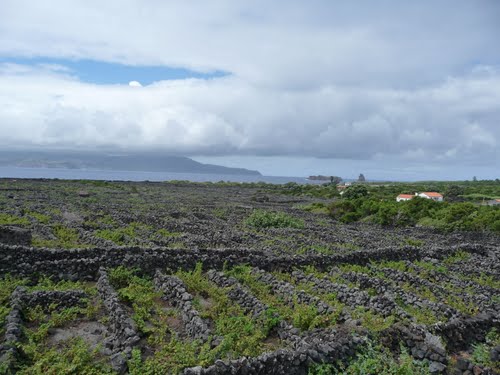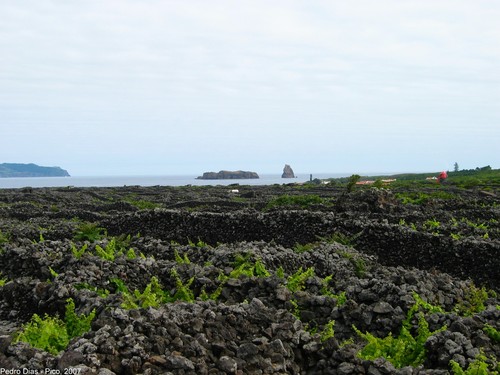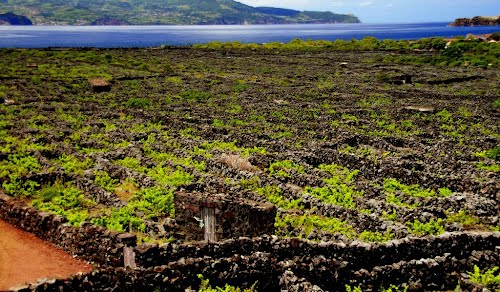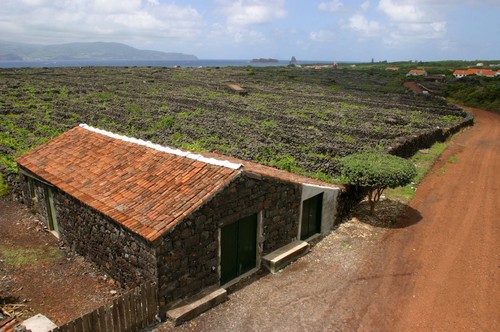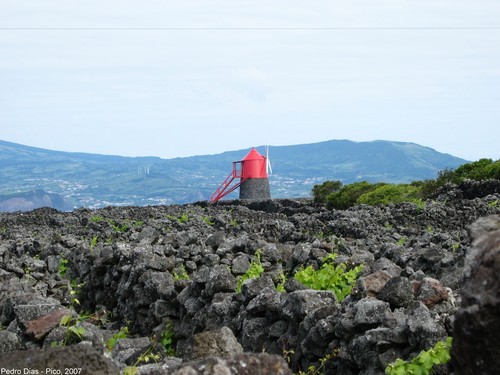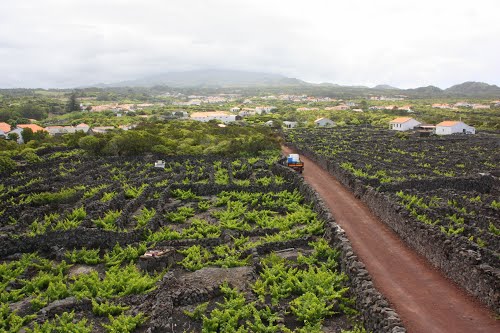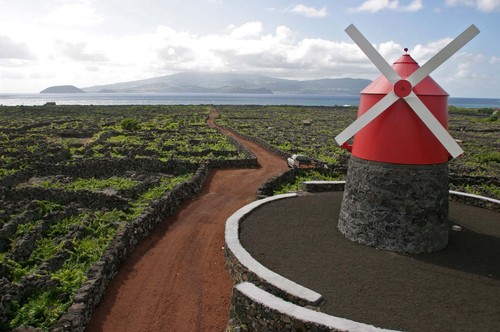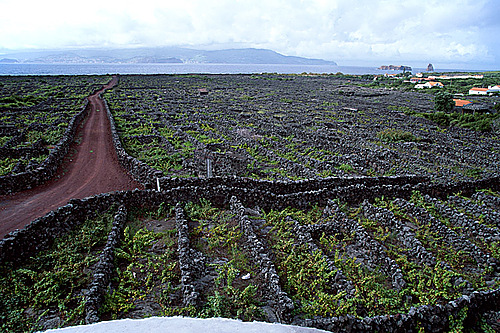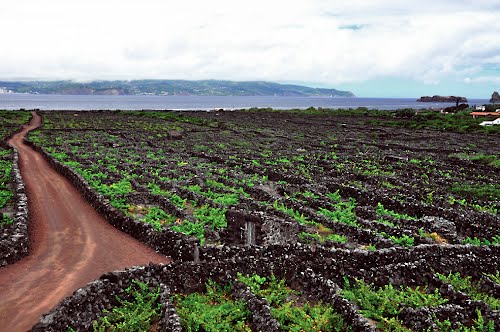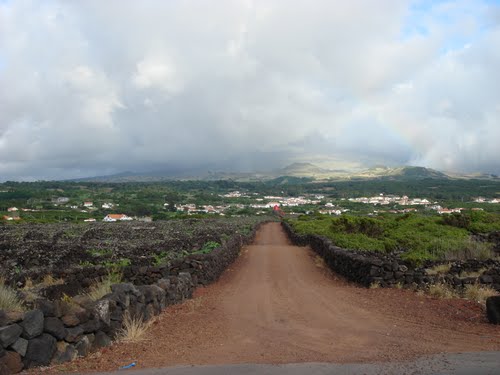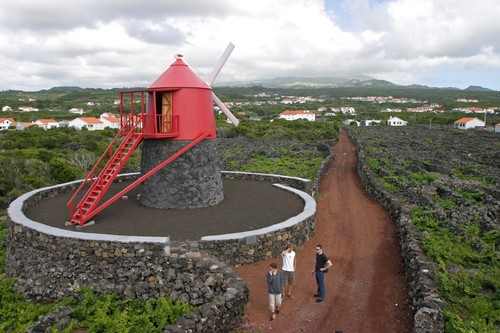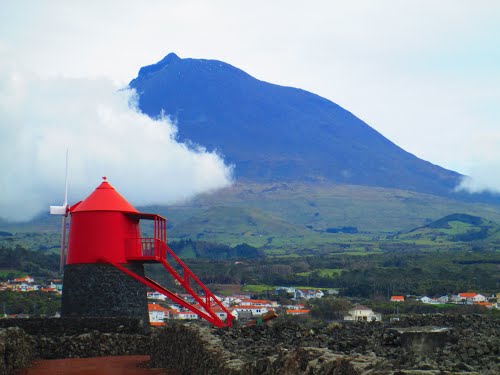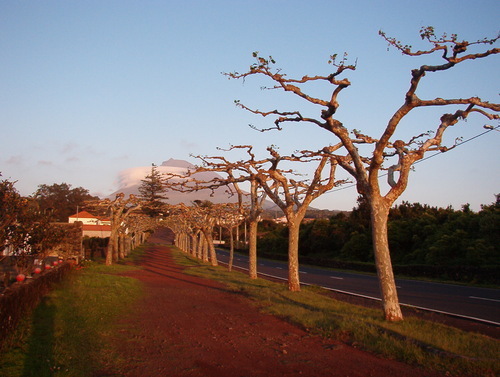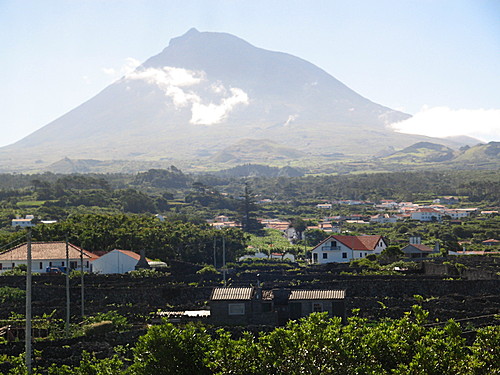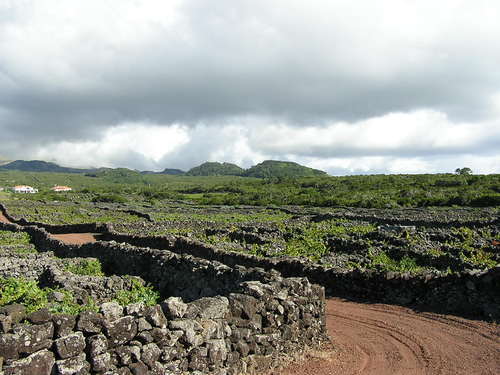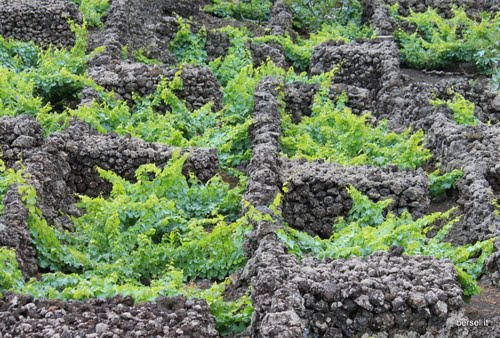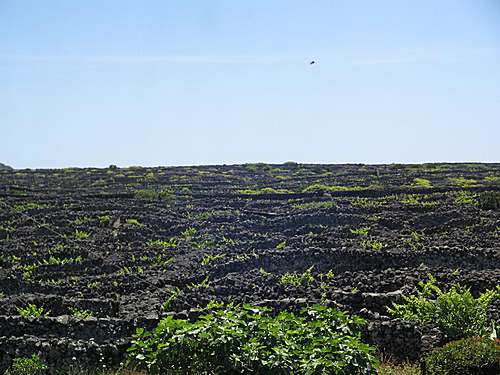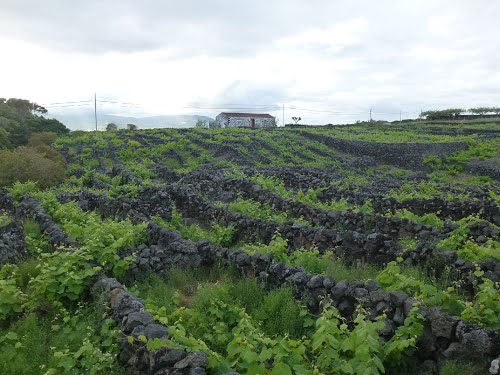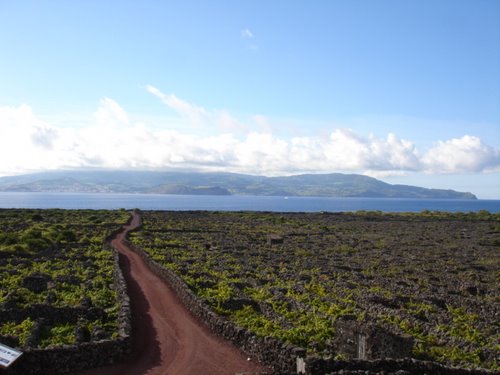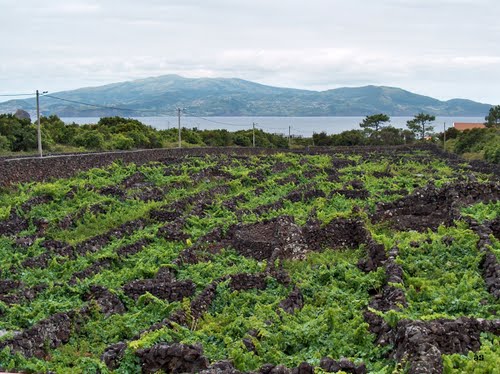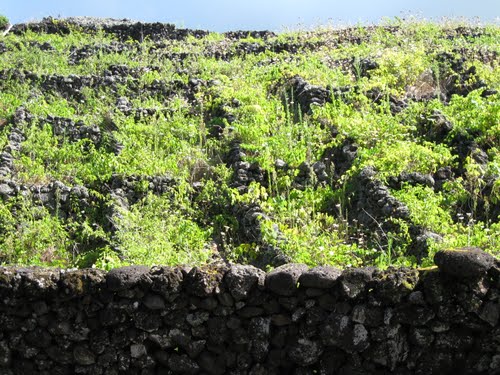The Landscape of the Pico Island Vineyard Culture is an outstanding example of the adaptation of farming practices to a remote and challenging environment. Pico Island is one of nine volcanic islands in the Azores Archipelago in the Atlantic Ocean. The island contains spectacular evidence of grape-growing and wine-making (viniculture), with an imposing pattern of orderly, long, linear walls running inland from, and parallel to, the rocky coastline around its northern and western edges. The stone walls form thousands of small, contiguous, rectangular plots built to protect crops from wind and salt spray. Vines were, and continue to be, planted within the small and soilless plots (locally called currais). The extensive system of small fields, as well as the buildings (manor houses, wine cellars, warehouses, conventional houses, and churches), pathways and wells, ports and ramps, were produced by generations of farmers enabling the production of wine.
Begun in the 15th century, wine production on Pico Island reached its peak in the 19th century and then gradually declined due to plant disease and desertification (loss of soil and reduced rainfall). However, a low level of grape vine growing and high-quality wine production continues to be undertaken and expanded, especially around the village of Criação Velha. Wine production is managed under a regime designed to ensure economic viability and sustainability as well as to retain traditional farming techniques.

